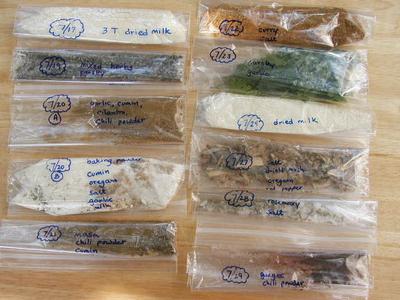15 July, 2001
Preparation & Reasons for research
Life on the ice.. .. (almost)
Last night, I couldn’Äôt sleep.
The upcoming trip to Alaska filled my thoughts; when I wasn’Äôt scrambling in
the dark for a pen to write down notes about last-minute preparations, I was
dreaming about the adventure to come.. ..
Over the last several weeks, preparation for the trip has kicked into high
gear. In addition to talking with teachers and students involved in summer
school (and hopefully, this expedition), family and friends, Greg Baker,
local newspapers, etc., I have also had to plan some of the logistics of my
stay on Matanuska Glacier.
Shelter:
Of all the preparation, planning for shelter was the easiest.. .. Because we
will be camping near the glacier, Greg advised that I bring a tent, ground
cover, sleeping pad and sleeping bag.
Clothing:
Contrary to legend, Alaska is not forever shrouded in snow. As the land
receives more and more sunlight as spring turns into summer, the land warms.
Anchorage (about 80 miles SW of Matanuska Glacier) receives 18 hours of
sunlight a day for much of July. Greg has advised me that in addition to the
long hours of sunlight, the location of the glacier between two mountain
ranges makes for a parcticularly sunny and pleasant mini-climate. From 60 or
70 degrees F (about 20 degrees C) during the day and slightly cooler at
night. He also warned that sudden changes in temperature are NOT unusual.
How do people respond to wide changes in temperature, often times in a matter
of hours? Bring layers of clothing.. .. long underwear, shirt, vest, jacket,
hat and gloves to cover your top, and long underwear, pants and a shell to
cover your legs. Layers are easily removed if you get too hot, and trap air
to keep you warm if you start to get cold.
Food:
Have you ever tried to plan two week’Äôs worth of meals? Un-refrigerated
meals? Un-microwaveable meals? Un-bakeable meals? And then pack everything
you need for those meals in a backpack along with two week’Äôs worth of
clothes, a stove, first aid and your shelter? We are going food shopping
in Anchorage or Palmer tomorrow, but there are no menus but the ones we
bring, and we will not have access to a pantry or spice cabinet. Don’Äôt get
me wrong: I love macaroni & cheese, but I can’Äôt live on it for two weeks.
I planned a menu that includes some of the following meals: macaroni &
cheese (of course), rice and broccoli with bean sauce, chili, rice curry,
burritos, cheese fondue, salsa soup with corn dumplings, Italian polenta,
mung bean stew, etc. Eating well in the backcountry requires careful
planning; I’Äôve included a picture of the spice cabinet for the meals in the
field.
I share this information to show the level of planning that goes into taking
a trip to the backcountry.. .. and, besides cameras and a computer, I’Äôm not
in charge of bringing any of the scientific instruments. Matanuska Glacier
is a popular research site because it is relatively EASY to get people and
gear to the site. If this is easy, imagine what "hard" is! (I’Äôll bet some
of the other TEAs have some stories!)
Science at work
I spent last weekend in Detroit at my brother’Äôs wedding. When I explained
the upcoming research project, one question that several people asked was:
"Why is this research important?"
There are two parts to the project and thus two responses.
Part 1: Using seismic reflection and ground penetrating radar together <
/i>
Part of our work is to fine-tune the use of these two methods for "seeing"
underground. The application of this work is far-reaching. Engineers and
architects can locate hidden faults and mines, planners can locate buried
pollutants and trace the likely path through the groundwater, etc. "Seeing"
underground is a useful ability for many people.
Part 2: Testing a hypothesis about how glaciers pick up layers of silt
We know that glaciers carve the land, but we don’Äôt know how the layers of
silt get trapped in the ice. The second part of our work is to test a
hypothesis about how glaciers pick up layers of silt. This portion of our
research is simply about extending human knowledge. Curiosity is a good
thing.
The hour grows late, and, as my grandfather would say, "That’Äôs enough
talking
for now."
Cheers.
~SM

Details!!! This is the "spice cabinet" for each meal.
Contact the TEA in the field at
.
If you cannot connect through your browser, copy the
TEA's e-mail address in the "To:" line of
your favorite e-mail package.
|
